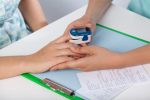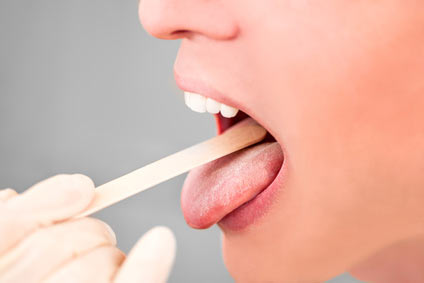New Treatments for Sleep Apnea
How to Reduce, prevent, and Cope with Stress
The new treatments for sleep apnea are an alternative to standard treatments, where some patients have problems to continue the therapy.
Although the gold standard in treating sleep apnea is considered to be Continuous Positive Airway Pressure or CPAP, the compliance by sleep apnea patients is below fifty percent.
How is it possible that one of the most effective cures for sleep apnea can have such a low tolerance with patients?
Well, if you didn't experience a CPAP therapy before, here is what might happen if you try it:
- uncomfortable
- noisy
- embarrassment
- the device is bulky and cumbersome
- throat and nose irritation
- sore or dry mouth
- nasal congestion
- eyes irritation
Considering these side effects of CPAP therapy, what are the new treatments for sleep apnea that can be effective but less uncomfortable?
New Surgery Treatments for Sleep Apnea
The AirLift procedure
The AirLift procedure utilises the Encore™ System & Revolution™ Suture Passer (implants designed specifically for hyoid suspension to the mandible, tongue suspension, or for both ).
The procedure is a new sleep apnea treatment which is only available in USA and EU. The main purpose of this surgery is to prevent the obstruction of your upper airway by introducing an implant into the tongue.
This implant is formed from two parts: a tongue suspension loop and a bone anchor. The suspension loop is introduced into your tongue through a small incision under the chin. Then, this loop is attached to the bone anchor which enables the tongue to move forward, preventing from falling back when you sleep.
The procedure is performed under local or general anesthesia, in less than 45 minutes, by an ENT specialist.
For more info about The AirLift procedure, see What is AirLift?.
Somnoplasty
Somnoplasty (Radiofrequency Tissue Volume Reduction) is a new technique to treat sleep apnea. It uses radio-frequency energy to shrink the bulk of soft tissue from the upper airway (soft palate or base of the tongue) through heating the cells.
Positive aspects:
- simple solution to treat snoring
- helpful in milder cases of sleep apnea
- is performed in the doctor's office
- it may involve fewer surgical risks than common surgical treatments for sleep apnea
- involves less bleeding, no general anesthesia, no hospitalization
Negative aspects:
- you may need two to four surgical sessions to have best results
- you need more than seven weeks to heal the scar between sessions
- it doesn't appear to be an effective treatment for moderate to severe sleep apnea.
- swelling often occurs within few days after the surgery, being a risk for the patient with sleep apnea who have difficulties keeping his airway open.
For videos related to somnoplasty, see Somnoplasty Videos.
Pillar Procedure for Sleep Apnea
Pillar Procedure is another new type of surgery to treat snoring and sleep apnea. It uses plastic implants or small polyester rods to stiffen the soft palate, to help keep it from relaxing when you sleep.
 Pillar Procedure Animation
Pillar Procedure Animation
Positive aspects:
- the surgery is generally done in doctor's office with only local anesthesia
- is indicated for patients with snoring and mild sleep apnea
- There have been no reported major complications
Negative aspects:
- the pillar procedure should not be used by patients under 18 years old.
- not effective in those patients with soft palate length less than 25mm.
- temporary complications: sore or scratchy throat, infection, swelling, or allergic reaction to Implant material.
- it may not be effective in moderate sleep apnea.
- the verdict on effectiveness of this new sleep apnea treatment is not based on long term results.
- not to mention that I found a lot of comments on Youtube about this procedure, and people are unhappy.
For exemple:"...it was completely ineffective for me. My doctor says I'm his first "failure". He wasn't too happy about that. I told him my girlfriend is even less happy! Oh, and I'm out $2500 with no results to show for it (I don't have apnea and insurance won't cover it). "
Laser assisted uvulopalatoplasty
Laser assisted uvulopalatoplasty (LAUP) is one of the new treatments for sleep apnea that can be performed under local anesthesia.
This surgery is indicated in patients with a flat-type palate, and involves several laser cuts making a V-shaped pattern on the soft palate.
 How the Laser assisted uvulopalatoplasty works?
How the Laser assisted uvulopalatoplasty works?
Positive aspects:
- treat snoring in eighty percent of cases
- help treating mild and moderate sleep apnea
- less risky, involving less time, bleeding and tissue removal
- no hospitalization and general anesthesia
- better control of pain symptoms and faster healing
Negative aspects:
- medical reports says that snoring may return within 2 years after surgery
- although LAUP can treat snoring, it doesn't cure sleep apnea. Remember that sleep apnea is more than snoring.
New Oral Appliance Therapy
Thornton Adjustable Positioner (TAP) is a dental device that pulls the lower jaw forward by the rotation of the knob positioned between the lips, creating an open airway in the throat.
 How TAP dental device works?
How TAP dental device works?
Positive aspects:
- improvement in snoring and reduce mild and moderate obstructive sleep apnea.
- the TAP device allows the patient to adjust the degree to which the mandible is held forward, to increase the comfort.
- custom-made by dental doctors.
Negative aspects:
- soreness or discomfort in the temporomandibular joint, jaw, or teeth.
- tooth or gingival discomfort due to pressure of the appliance.
- excess of saliva
- jaw soreness
- movement of the teeth
- pain on the mandibular muscles
For more info oral appliances, see Sleep Apnea Dental Devices.
New Positional Therapy for Sleep Apnea
Avoiding sleeping on the back can be the simplest and most cost effective type of sleep apnea treatment. Positional therapy can also be used to supplement other types of treatment, like CPAP or weight loss, to increase their effectiveness.
Rematee T-shirt & Bumper Belt
 How the positional therapy works?
How the positional therapy works?
Positive aspects:
- you will sleep on the side rather on your back without feeling discomfort or pain on your spine.
- effective in mild obstructive apnea and in some moderate cases.
- the anti snore shirt can be a great asset in treating sleep apnea with CPAP device.
- you can try your own anti snore shirt in a sleep clinic, to see if positional therapy may alleviate your symptoms and be an effective course of treatment for you.
- for overweight patients with obstructive sleep apnea, anti snore shirt together with weight loss can be the most effective and the cheapest new treatment for sleep apnea.
Negative aspects:
- is effective only in patients with mild or moderate obstructive sleep apnea, where the main cause is an obstruction of the airway while lying on their back.
- you need to wear it every night to avoid apnea events or snoring.
For more info about sleep positions to treat sleep apnea, see Positional Therapy.







